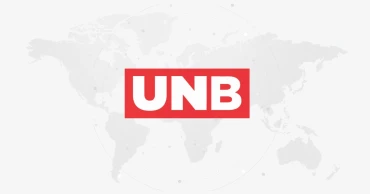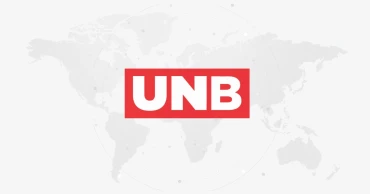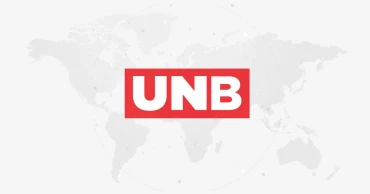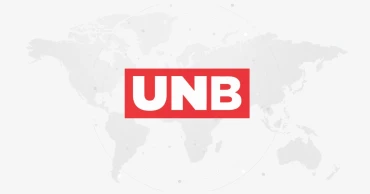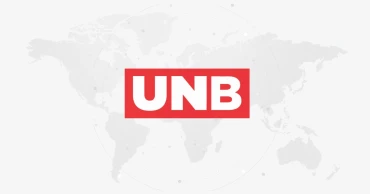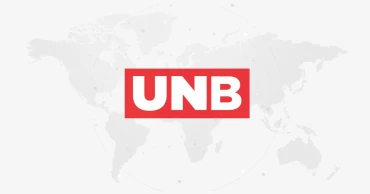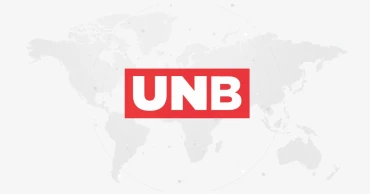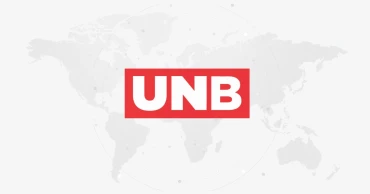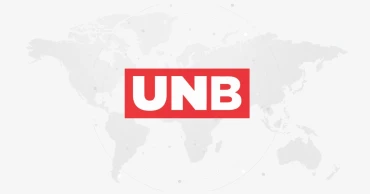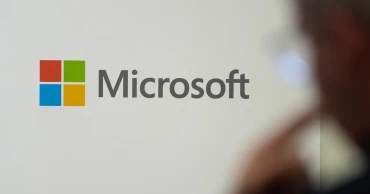Tech-News
Rampant NID data trade: Mobile banking institutions alert law enforcement
In a concerning development last year, personal information of individuals registered with the country's Smart National Identity Card (NID) system was reportedly available on several Telegram channels, with instances of buying and selling such data coming to light.
A quarter with vested interest has recently emerged, engaging in the illicit trade of customer data. To elevate the prominence of such data trading, there have been attempts to associate the names of reputable mobile banking institutions.
Sources indicate that what began with the exploitation of Telegram bots has evolved into a more organized operation, with perpetrators setting up a dedicated website alongside Telegram channels to facilitate this illicit trade. These individuals are also actively advertising on social media platforms, falsely claiming to hold customer information from reputable Mobile Financial Services (MFS), thus aiming to mislead and deceive customers through various tactics.
Former Twitter executives sue Elon Musk over firings, seek more than $128 million in severance
The modus operandi involves circulating specific links through Telegram channels that purportedly allow access to personal details of individuals by inputting their NID numbers and birthdates. Despite skepticism about the authenticity of such claims, due to the absence of verification mechanisms, the alleged data breaches have stirred concern among the public, already wary from previous incidents involving the national ID card database.
ICT experts emphasize the vulnerability of the populace to misinformation regarding new leaks, amidst conflicting statements and opportunities for fraudulent activities. They note that while opening an account in any financial institution requires national ID information and a photo, the allegedly leaked information on digital platforms is deemed non-exploitable for fraudulent purposes within Bangladesh.
The national ID database, a critical repository of personal information for approximately 120 million citizens, remains a target for cybercriminals. IT expert Tanvir Hassan Zoha warns, "Those selling information online and those purchasing it are both committing offenses and could face legal consequences under the vigilant oversight of law enforcement agencies. Interestingly, there's no real profitability in buying such information in Bangladesh."
A significant data breach in July last year exposed sensitive information of millions through the website of the Office of the Registrar General, Birth and Death Registration, searchable via Google. Subsequent leaks involving smart card data have seen such information circulated as belonging to customers of mobile banking institutions and banks. However, verification efforts have unveiled inconsistencies, with varying pieces of information available in different groups.
This proliferation of customer information on digital platforms has sown discomfort and fear among citizens, potentially eroding trust in financial institutions and fostering a climate of insecurity. Mobile banking entities, while yet to issue formal statements, have reportedly notified law enforcement agencies about these breaches.
Best and Worst Android OS Considering Bloatware in 2024
A senior official from a leading mobile banking institution highlighted the challenges of combating digital platform propaganda related to data breaches, emphasizing their prompt communication with law enforcement upon becoming aware of the recent incidents.
Md Hassan Shahriar Fahim, managing director of Octagram Limited that specializes in cybersecurity, underscores the risks to individuals enticed into purchasing such data. Collaborative analysis with law enforcement has revealed that information thieves also retain data on buyers, exposing them to potential hacking, blackmail, and other complications. Victims, in turn, find themselves in a predicament when seeking legal assistance, often unable to disclose the circumstances of their online harassment.
Former Twitter executives sue Elon Musk over firings, seek more than $128 million in severance
Former senior executives of Twitter are suing Elon Musk and X Corp., saying they are entitled to a total of more than $128 million in unpaid severance payments.
Twitter’s former CEO Parag Agrawal, Chief Financial Officer Ned Segal, Chief Legal Counsel Vijaya Gadde and General Counsel Sean Edgett claim in the lawsuit filed Monday that they were fired without a reason on the day in 2022 that Musk completed his acquisition of Twitter, which he later rebranded X.
Because he didn’t want to pay their severance, the executives say Musk “made up fake cause and appointed employees of his various companies to uphold his decision.”
The lawsuit says not paying severance and bills is part of a pattern for Musk, who's been sued by “droves" of former rank-and-file Twitter employees who didn't receive severance after Musk terminated them by the thousands.
“Under Musk’s control, Twitter has become a scofflaw, stiffing employees, landlords, vendors, and others,” says the lawsuit, filed in federal court in the Northern District of California. “Musk doesn’t pay his bills, believes the rules don’t apply to him, and uses his wealth and power to run roughshod over anyone who disagrees with him.”
Representatives for Musk and San Francisco-based X did not immediately respond to messages for comment Monday.
The former executives claim their severance plans entitled them to one year's salary plus unvested stock awards valued at the acquisition price of Twitter. Musk bought the company for $44 billion, or $54.20 per share, taking control in October 2022.
They say they were all fired without cause. Under the severance plans, “cause” was narrowly defined, such as being convicted of a felony, “gross negligence” or “willful misconduct.”
According to the lawsuit, the only cause Musk gave for the firings was “gross negligence and willful misconduct,” in part because Twitter paid fees to outside attorneys for their work closing the acquisition. The executives say they were required to pay the fees to comply with their fiduciary duties to the company.
“If Musk felt that the attorneys’ fees payments, or any other payments, were improper, his remedy was to seek to terminate the deal — not to withhold executives’ severance payments after the deal closed,” the lawsuit says.
X faces a “staggering” number of lawsuits over unpaid bills, the lawsuit says. “Consistent with the cavalier attitude he has demonstrated towards his financial obligations, Musk’s attitude in response to these mounting lawsuits has reportedly been to ‘let them sue.’”
Water Battery: What's Special About It
Lithium-ion batteries have been ruling the world for storing electricity since they were invented. From simple charger lights to giant electric cars, most modern devices use lithium-ion batteries as their powerhouse. However, they have gone a little off-fame for their explosive nature and safety concerns for large-scale grid energy. To overcome the risk, a multinational team of scientists, researchers, and industry collaborators have come up with the world’s first water batteries. These batteries are claimed to be less toxic, recyclable, and incombustible.
What is a Water Battery?
The concept of a water battery is not avant-garde. However, experts have been trying to make an ideal version of such a battery to use in the industrial field for a long time and finally succeeded. A traditional battery uses organic electrolytes as a conveyor of electricity between negative and positive edges. Interestingly, in a water battery, pure and plain water serves as the electrolyte.
It took a fair deal of effort to make a water-based battery an acceptable, stable, and modern technology that is usable all across the digital industry. In the manufacturer's terms, these batteries will be termed as aqueous metal-ion batteries.
Read more: Most Anticipated Smartphones Coming in March 2024
Invention of Water Batteries
A team led by RMIT University and headed by Distinguished Professor Tianyi Ma developed recyclable 'water batteries.' These batteries are safer than lithium-ion ones, as they don't catch fire or explode. They utilize water instead of volatile materials. The team's breakthroughs in aqueous energy storage devices significantly enhance performance and lifespan. Their manufacturing simplicity allows mass production, utilizing abundant, inexpensive materials like magnesium and zinc.
Unlike traditional batteries, water batteries use water as an electrolyte, replacing hazardous substances. They work similarly to lithium-ion batteries but without the associated risks. Additionally, managing water levels in these batteries is crucial for longevity and requires periodic replenishment to maintain efficiency. This innovation offers a safer, more environmentally friendly energy storage solution for various applications.
How to Block Ads on Android Phones in 2024
Unwarranted pop-up ads have always been a bone in the throats of all Android Smartphone users. Interrupted streaming, opening unwanted sites, downloading harmful malware, and giving access to viruses – some of the most common issues – can be the epitome of bad user experience and also can be threatening to the privacy and security of a user. As annoying as these ads can be, android users can keep them at bay by taking a few simple steps.
Why Are Ads Popping Up on Your Android Phone?
At their core, ads on an Android phone are not very different from the ones shared on other media. All of them are meant to generate leads, offer discounts and trials, or get users to subscribe or download a product or service. But sometimes, things can take a wrong leap as some ads are made only to harass or rob a user via hidden viruses or malware. Relatable cases have risen to such an extent that people are starting to call such ads “Malvertisement.”
Malvertisements lead users to a fake registration page, provoking them to share their email and passwords. Sometimes, scammers can use these ads to alert users about their phones being attacked by malware only to spread threats or blackmail them.
Read more: Internet Safety Tips for Children, Teens, and Adults
The first step to being aware of unwanted ads on an Android phone is to know why they are showing up in the first place.
Here are a few common reasons:
Adware
Hackers often develop and share malicious ads that pop up without warning, redirect users to hostile websites, or, in extreme cases, can even take over a phone’s control. If you feel that the lock screen, home screen, and the browsers of your phone are swarmed with ads, secretly running adware can be a reason.
App permission
Apps get their permission to send you a request to perform a task and notifications and usually get your location after you allow them to do so. Some apps can track your behavior, everyday tasks, inclinations, and buying habits and sell the information to the black market.
Read more: How to Check Official Phone Using BTRC IMEI Number?
Notifications
Most apps pop up a request to show or send notifications to update you about their latest campaign or intent. You will find a large part of such notifications useless. Being aware of the shortcomings, you should think before allowing an app to send you notifications.
Ad-blocking app
If your ad-blocking apps don’t seem to work or are being turned off all by themselves, it can be a sign that your phone is infected with suspicious malware.
Best and Worst Android OS Considering Bloatware in 2024
Ever wondered how many push notifications you get in a day? It’s alright when it's from essential apps like messages, emails, and others. But what about unnecessary first-party apps or “bloatware”? They take up your essential space and constantly buzz off with ads that are both distracting and disturbing. Unfortunately, most Android OS today uses some form of bloatware. We’ve ranked the best and worst in terms of bloatware experience in 2024. Check it out.
What is Bloatware?
Bloatware refers to pre-installed apps on your device that are typically unnecessary. It can include trial versions of software, manufacturer-specific applications, promotional apps, or redundant utilities.
Bloatware apps are almost always first-party apps developed by the manufacturer to provide a “customized” experience for the user. More often than not, this bloatware takes up storage space, consumes system resources (such as RAM and CPU cycles), and may even impact system performance or battery life.
It’s not like that brands aren’t aware of the issues. However, the persistent inclusion of bloatware is due to the ecosystem integration as well as third-party collaboration.
Read more: What Is Google Gemini AI? How to Use the New Chatbot Model
Defining Android OS Experiences Concerning Bloatware
We already mentioned that most OS out there have some form of bloatware included in the setup process. These bloatware apps can be removed after the first boot. The best metric to rate Android OS in this regard would be to consider the following:
- The number of bloatware apps on the OS
- Whether the OS asks for permission to install bloatware while setting up the phone
- Whether the bloatware can be uninstalled after setup or at any given time
Here’s what we think is the best and worst OS based on the above indicators.
Read more: Why Are We Asked to Put Our Phones on Airplane Mode During Flights?
Elon Musk sues OpenAI and CEO Sam Altman, claiming betrayal of its goal to benefit humanity
Elon Musk is suing OpenAI and its CEO Sam Altman over what he says is a betrayal of the ChatGPT maker's founding aims of benefiting humanity rather than pursuing profits.
In a lawsuit filed at San Francisco Superior Court, billionaire Musk said that when he bankrolled OpenAI's creation, he secured an agreement with Altman and Greg Brockman, the president, to keep the AI company as a non-profit that would develop technology for the benefit of the public.
OpenAI, Intel CEOs cite artificial intelligence’s voracious appetite for processing powe
Under its founding agreement, OpenAI would also make its code open to the public instead of walling it off for any private company's gains, the lawsuit says.
However, by embracing a close relationship with Microsoft, OpenAI and its top executives have set that pact “aflame” and are “perverting” the company's mission, Musk alleges in the lawsuit.
“OpenAI, Inc. has been transformed into a closed-source de facto subsidiary of the largest technology company in the world: Microsoft,” the lawsuit filed Thursday says. “Under its new Board, it is not just developing but is actually refining an AGI to maximize profits for Microsoft, rather than for the benefit of humanity."
Microsoft's new deal with France's Mistral AI is under scrutiny from the European Union
AGI refers to artificial general intelligence, which are general purpose AI systems that can perform just as well as — or even better than — humans in a wide variety of tasks.
Musk is suing over breach of contract, breach of fiduciary duty and unfair business practices. He also wants an injunction to prevent anyone, including Microsoft, from benefiting from OpenAI's technology.
Don’t use rice for your device. Here’s how to dry out your smartphone
You were walking next to a swimming pool when you slipped and dropped your phone into the water. Or it slipped out of your hand when you were next to a filled bathtub or toilet.
However your smartphone got wet, you now need to dry it. But what do you do? There’s lots of advice on the internet, some of it conflicting. Apple inserted itself into the debate recently when it put out an advisory that included a warning against using rice.
Here are some things to keep in mind next time your phone has an unintended encounter with a liquid.
What you should do
Dry off the exterior with a towel or clean cloth, even your shirtsleeve — anything that’s absorbent. Take out the SIM card and holder. If possible, remove the back housing and battery to wipe them dry. Also, if possible, turn the phone off.
Pros & Cons of Flagship Smartphones
iPhones can’t be disassembled so Apple recommends tapping it gently against your hand with the connector ports facing down so liquid can flow out.
Samsung, which is the biggest maker of Android phones, recommends using a cotton bud to get moisture out of the earphone jack and charging port. In contrast, Apple says cotton buds shouldn’t be inserted into iPhone openings.
If it’s not water but another liquid — a drink, seawater or chlorinated pool water — Samsung advises soaking the phone in clean water for a few minutes then rinsing it to get rid of any impurities or salinity that could speed up corrosion of the circuitry inside.
Both companies say it’s best to leave the phone out in a well ventilated area (perhaps with a fan) to dry it out. Google says leave the device to dry at room temperature.
What you shouldn’t doDon’t use a hair dryer or compressed air on your phone. Don’t put it in a freezer - this might stop your device from short-circuiting but the problem will be back once you try to thaw it. And while this might seem obvious, don’t put your device in a tumble dryer or on top of a radiator.
Don’t power it up or try to charge it with a cable — although wireless charging is OK if your phone has it and you really need to turn it on in an emergency.
Microsoft's new deal with France's Mistral AI is under scrutiny from the European Union
So what about using rice to dry your device? You may have heard that putting a phone in a bowl of rice will help draw out moisture. It’s been a tip that’s been out there for years.
Apple, however, says that’s a no-no. The company warned against it in an advisory published in early January. It drew little attention at the time, but then people noticed the line that said: “Don’t put your iPhone in a bag of rice. Doing so could allow small particles of rice to damage your iPhone.”
Is there anything I can use besides rice?The best option is silica gel, a drying agent that can absorb lots of moisture. Silica gel beads are typically found in packets that are included with products like beef jerky, seaweed sheets or sneakers to keep them dry. You can also buy them in bulk online. This works best if you put them in an airtight box with your phone.
When do I know it’s dry?It’s hard to tell but it’s best to wait as long as possible — at least a few days. Samsung advises bringing your device into a service center for inspection even after it’s been air-dried.
Aren’t phones waterproof nowadays?Most phones nowadays are designed to be water-resistant, which means they can resist water entering critical areas for a certain amount of time. But beware, this isn’t the same as being waterproof.
Apple says the iPhone 7 and and newer models are splash and water resistant. iPhone XS devices and up have the IP68 rating, which means they can be submerged for as long as 30 minutes and, depending on the model, as deep as 6 meters (20 feet). These models also pop up a warning if there’s liquid detected in key ports, and warn against charging. Samsung says most of its Galaxy Android phones feature the same rating, though the maximum depth is about 5 meters (16 feet).
Google’s newer Pixel phones carry the same water resistance ratings, but Google warns that they aren’t waterproof and the water resistance will diminish over time because of “normal wear and tear, device repair, disassembly or damage.”
Pros & Cons of Flagship Smartphones
The smartphone market brings diverse types of devices to cater to the needs of people seeking diverse price levels. The most advanced smartphones that belong to the top tier are called the “flagship phones”. But not everyone can afford these high-end phones. Like other segments, flagship phones have a particular fan base around the world. Now the question arises, is it necessary to buy flagship phones while breaking the bank? Let’s take a look at the advantages and drawbacks of flagship smartphones.
What is a Flagship Phone?
The word “flagship” represents a conventional term in the technology industry. A product becomes a flagship item when it comes packed with updates, features, and technologies incomparable to other items of the same product line. For presenting the highest-end features, a flagship device usually tags itself with the highest price, too.
Most of the popular smartphone manufacturing brands have a flagship phone series; for instance, ‘The Mi series by Xiaomi, the iPhone series by Apple, the Galaxy S series by Samsung, etc. These flagship phones boast some exclusive features that are unavailable in the mid-range or budget phones.
Read more: Samsung Galaxy S24 Ultra Review: The Flagship Benchmark for 2024
Pros of a Flagship Phone
As flagship phones come with the highest price range, they, therefore, come with the most convenient features and powerful abilities. When you are set for a flagship phone, usually you can expect it to offer a few privileges over other general phone models. Like:
Cutting-edge hardware
First and foremost, a flagship smartphone is designed to appear as the latest and most updated product of a company. From robust processors to ingenious camera systems, flagship smartphones aim to convince even the most doubtful tech enthusiasts of having the best product from the manufacturing company.
User experience
Of course, a flagship is not all about the unparalleled hardware. A flagship phone is also about getting the best possible user experience. These phones are faster, more responsive, and easier to use. Manufacturers implement the latest UI and newest version of the operating system to give the smoothest and most efficient interactivity.
Read more: ZTE Nubia Z60 Ultra Review: A Heavy-Duty Flagship Gaming Device
What Is Google Gemini AI? How to Use the New Chatbot Model
The age of generative AI started its journey in 2023. Day by day, the features of generative AI like chatbots are being improved to enhance user experience around the world. Google's Bard made waves with its capabilities, but now, a new era dawns with Gemini. This innovative chatbot boasts enhanced intelligence and functionality. Join us as we explore Gemini's features, capabilities, and impact on the future of conversational AI.
What Is Google Gemini AI?
Google Gemini is the newest and most advanced artificial intelligence made by Google. It understands images, videos, text, and even sounds. What makes Gemini stand out is how it acts almost like a human. Gemini AI is good at understanding information, solving problems, and planning for the future.
Gemini has three versions: Pro, Ultra, and Nano. The Pro version has been released already, and the Ultra version will be available next year. It is expected that Gemini will play a crucial role in the latest chatbot technology, pushing the boundaries of what AI can do.
Read more: AI Robot Chefs: Automated Cooking Could Redefine Food Industry
How to Use the New Chatbot Model of Google
Gemini AI is a type of computer system called a neural network. It has been trained using a huge amount of text and code from various sources like books, articles, and code repositories. This training helps the neural network understand the patterns and connections between words and phrases in this data. As a result, Gemini AI can do things like generate text, translate languages, create different types of content, and provide informative answers to questions.
How to Use Gemini AI
If you have a Google account already, using Gemini is easy. Just go to the website using your internet browser and log in with your Google details. But remember, you need to have a Google account.
If you use a Google Workspace account, you might need to switch to your email to try Gemini.
Read more: How to Make Money with AI for Beginners and Professionals
Microsoft's new deal with France's Mistral AI is under scrutiny from the European Union
The European Union is looking into Microsoft's partnership with French startup Mistral AI as part of its broader review of the booming generative artificial intelligence sector to see if it raises any competition concerns.
The 27-nation bloc's executive commission said Tuesday in a brief statement that it's analyzing the agreement between the two companies announced a day earlier. Microsoft declined to comment. Mistral did not respond to a request for comment.
Microsoft said Monday it was teaming up with Mistral through a 15 million euro ($16 million) investment in the French company, which emerged less than a year ago. The agreement could cut the U.S. software giant's reliance on ChatGPT-maker OpenAI for supplying the next wave of chatbots and other generative AI products.
The commission, the EU's top antitrust enforcer, said it's including the deal as part of its broader review of the generative AI market. It's examining agreements between digital tech giants and generative AI developers and providers.
The EU last month started looking into Microsoft’s multibillion deal with San Francisco-based OpenAI, which could lead to a formal merger investigation.
